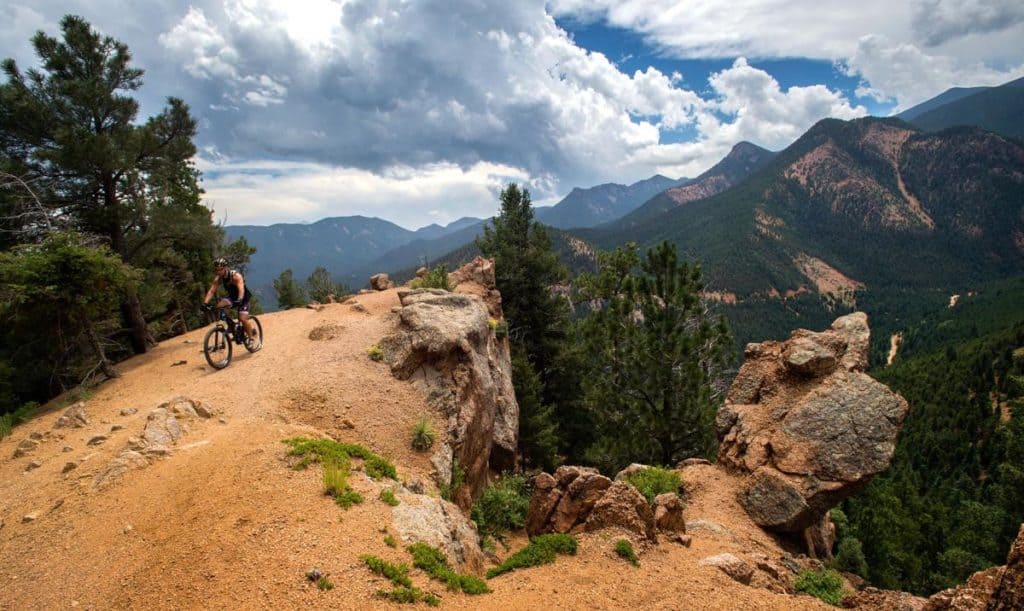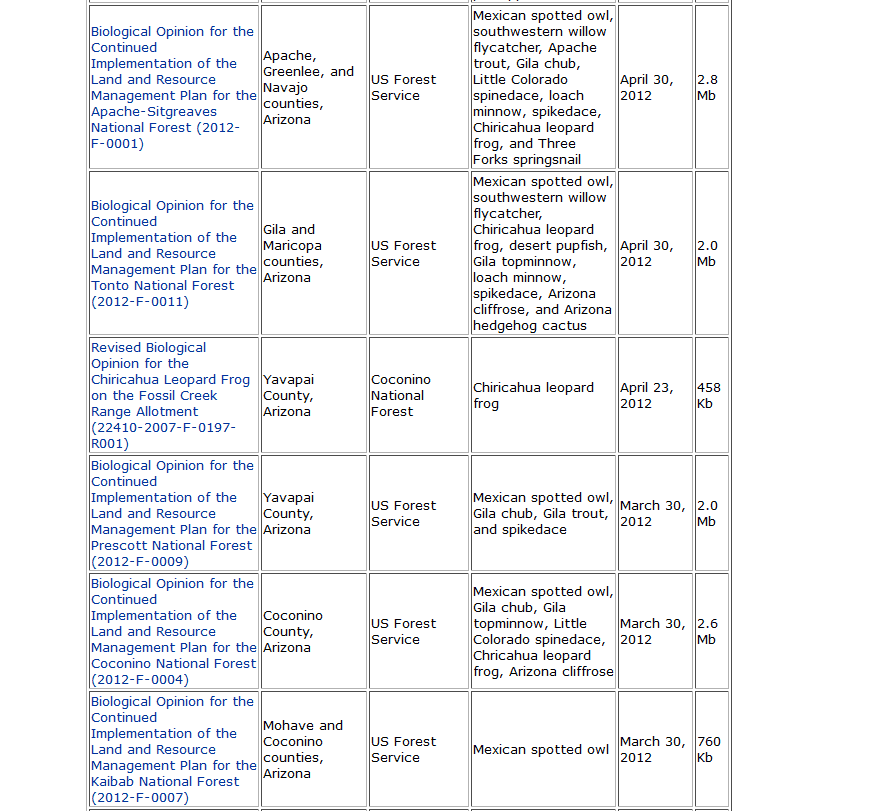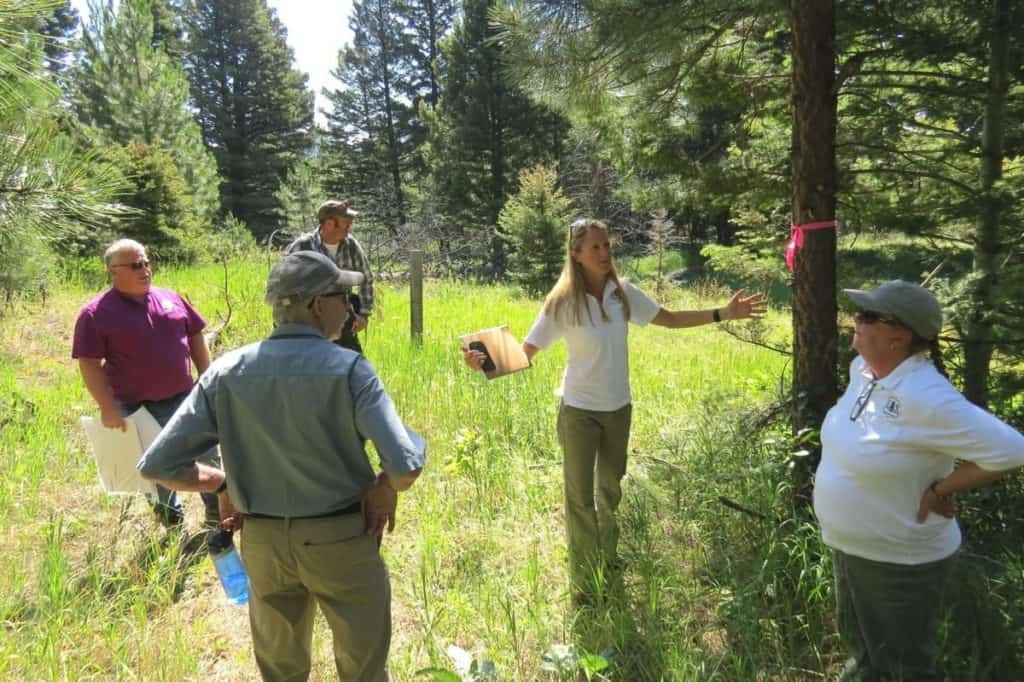Forest Service summaries (which I have summarized further below): 0000000_2019_10_09_Litigation Weekly Email
COURT DECISIONS
- Waterlegacy v USFS Region 9 Northmet project
- 00001.1 Water Legacy Poly Met
- 00001.2 Water Legacy Poly Met00001
The district court found plaintiffs lacked standing to challenge the NorthMet Project Land Exchange to allowing copper mining on the Superior National Forest. (D. Minn.) This case is discussed here.
The district court held that the administration of a special use permit for dam infrastructure on the Ocala National Forest is not subject to judicial review. (M.D. Fla.)
The district court denied the government’s motion to dismiss or transfer to multiple courts the challenge to the 2015 decision by the BLM and FS to amend land management plan direction for sage-grouse affecting national forests in three regions. (D. Idaho)
The district court remanded the decision on the Pilgrim Creek Timber Sale Project on the Kootenai National Forest to prepare a supplemental EIS and reinitiate consultation on grizzly bears regarding the effects of ineffective road closures. The remand also requires reinitiation of consultation on the Forest’s “Access Amendment,” which is part of its revised forest plan. (D. Mont.) (More information is provided here. An earlier court decision on similar issues on the same project was discussed here.)
UPDATES
- Atlantic Coast Pipeline (no documents, but here’s a preview)
The Supreme Court has agreed to hear this appeal of the order by the 4th Circuit Court of Appeals to vacate the Forest Service decision to permit construction of the pipeline across the George Washington and Monongahela National Forests and under the Appalachian Trail.
The district court denied a temporary restraining order regarding HUD’s authorizing the use of disaster relief funds to the Forest Service for logging on the Stanislaus National Forest and construction of a new biomass power plant. (N.D. Cal.)
NEW CASES
The complaint concerns a second iteration of the Pettijohn Project on the Shasta-Trinity National Forest, and includes claims of ten statutory violations related primarily to northern spotted owls and old growth. (E.D. Cal.)
The complaint alleges that the Bridger-Teton and Caribou-Targhee National Forests are improperly allowing mountain bike use in two wilderness study areas and motorized use in one of them. (D. Wy.) (Discussed on this blog here.)
NOTICES OF INTENT
Claim: The Pike and San Isabel National Forest failed to relocate a motorized trail out of an area where it would affect the federally listed greenback cutthroat trout as it had documented in a decision notice. (Discussed on this blog here.)
Claim: The Beaverhead-Deerlodge National Forest failed to initiate consultation regarding the effects on bull trout of operation of the Flint Creek Ditch and fish screen by the Montana Department of Natural Resources, as the decision notice on the East Fork Fish Creek Screen had stated.
Claim: The analysis of effects on Canada lynx for the John Wood Forest Management Project on the Caribou-Targhee National Forest failed to meet requirements of ESA and NEPA.
BLOGGER’S BONUS
The Wilderness Society and Moncrief Oil and Gas Master LLC reached an out-of-court settlement resulting in the permanent retirement of a federal oil and gas lease in the Badger-Two Medicine area near Glacier National Park. The district court’s ruling and lease reinstatement had been appealed by multiple conservation, sportsmen and Blackfeet Nation stakeholders and their appeal was pending before the D.C. Circuit Court of Appeals when the settlement was reached. Williams (TWS), along with Peter Metcalf, executive director of the Glacier-Two Medicine Alliance, thanked the Wyss Foundation for its assistance in “making the lease retirement possible.” This area has been previously discussed here (and I thought Sharon might be interested in this settlement).
Speaking of national monuments, the Western Environmental Law Center has filed a second lawsuit against the BLM for its decision to open 90% of this Monument to recreational target shooting, which has “irresponsibly damaged centuries-old saguaro cacti and irreplaceable petroglyphs.”




